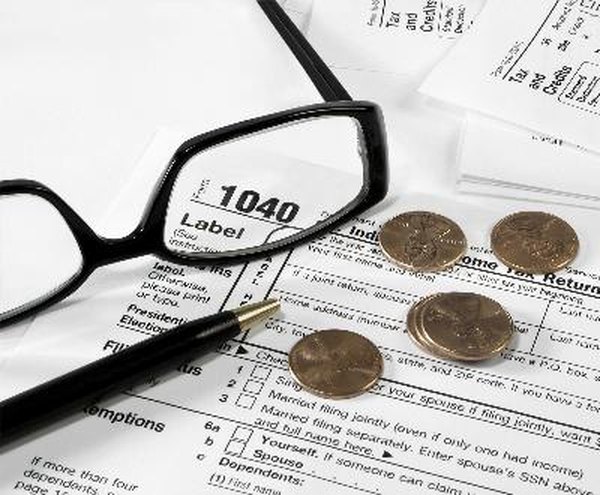The Federal Income Tax on Nonqualified Annuities
Nonqualified annuities contain taxed and untaxed money.
Form 1040 Tax Forms image by Viola Joyner from Fotolia.com
If you have a retirement plan at work or your own IRA, you probably have a good idea of how these qualified annuities are taxed once you begin making withdrawals. Non-qualified annuity taxation is somewhat different and is calculated based on investment income.
Qualified vs. Non-Qualified Annuity
Qualified annuities are funded with pre-tax dollars and can qualify as a tax deduction. On the other hand, non-qualified annuities are funded with post-tax dollars, meaning money you've already paid tax on.
Non-qualified variable annuities grow but aren’t taxed until funds are removed from the account. This occurs either because the annuity’s owner makes a withdrawal, or because of annuitization, the process of converting the non-qualified annuity into regular income payments. How much of the annuitization is taxable is determined by when the policy is annuitized. Your insurance company calculates an exclusion ratio at that time, which determines what percentage of the payments are not subject to income tax.
Non-qualified annuities primarily consist of principal return, and that principal amount is not subject to tax. The investment income from non-qualified annuities is taxed as ordinary income, not as capital gains. In this sense, the investment income is similar to the taxation of 401(k)s, non-Roth IRAs and other qualified retirement plans.
Annuity Beneficiary Taxation
If the beneficiary of a non-qualified annuity is anyone other than a spouse, deferred earnings are taxed as ordinary income. There is no step-up in the cost basis at death. If the beneficiary is a spouse, they may continue the variable annuity policy and the tax-deferred growth. When it comes to estate taxation, non-qualified annuities are counted as assets for tax purposes.
Calculating Non-Qualified Annuity Income Tax
IRS Publication 939, which explains one method of calculating non-qualified annuity income tax, is titled "General Rule for Pensions and Annuities," and the "general" part of its title covers a lot of territory. IRS Publication 575 (Pension and Annuity Income) explains the other method of calculating this tax, called the Simplified Method.
Taxpayers can use the Simplified Method if the starting date of their annuity is after November 18, 1996 and they meet two other criteria. First, the annuity must be a qualified employee plan, a qualified employee annuity or a 403(b) plan. Second, as of the annuity's starting date, a taxpayer is under the age of 75 or entitled to less than five years of guaranteed payments.
After determining which way of calculating non-qualified annuity income tax is right for you -- the General Rule or the Simplified Method -- visit IRS.gov/forms and search for either Publication 939 or 575 for more details.
2018 Non-Qualified Annuity Taxation
The Tax Cuts and Jobs Act, signed into law on Dec. 22, 2017, does not change non-qualified annuity taxation per se, but it does change the federal tax brackets. So, recipients of non-qualified annuity income may find less of it subject to taxation or they may not have to pay taxes at all. The new tax brackets are 10 percent, 12 percent, 22 percent, 24 percent, 32 percent, 35 percent and 37 percent. The federal estate tax exemption for tax year 2019 is $11.4 million per person (up from $11.18 million in 2018).
References
- IRS: Is My Pension or Annuity Payment Taxable?
- IRS: Publication 575 (2018), Pension and Annuity Income
- Non-Qualified Annuity | WoodmenLife.org
- Qualified vs Non-Qualified Annuities | Taxation and Distribution
- Tax Foundation: Income Tax Brackets and Rates
- IRS: What's New - Estate and Gift Tax
- IRS: Publication 939
Writer Bio
A graduate of New York University, Jane Meggitt's work has appeared in dozens of publications, including PocketSense, Financial Advisor, Sapling, nj.com and The Nest.

